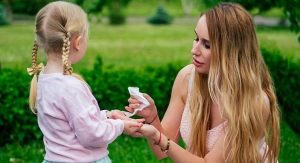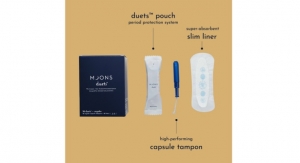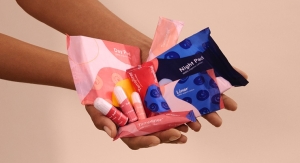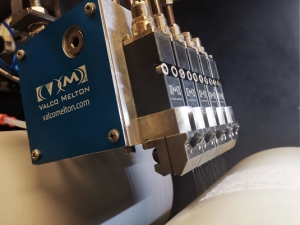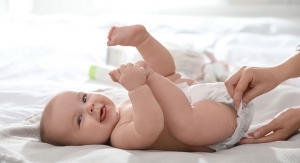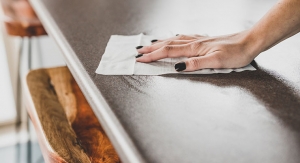Karen McIntyre , Editor11.10.17
At the Outlook Conference in late September, EDANA shared new testing guidelines for feminine hygiene products. The guidance document aims to meet the demand for relevant, accurate, relatable and comparable tests, covering performance standards as well as substance testing across a range of feminine hygiene products.
EDANA’s Scientific and Technical Affairs director, Marines Lagemaat, introduced the guidelines, which are designed as a best practice tool for third parties to ensure the scientifically sound testing of feminine hygiene products.
“We noticed a growing interest in consumer testing,” he says . “We also noticed some organizations running tests in a poor manner. This results in reports that are confusing to consumers and create concerns for retailers and manufacturers (retailers use the info for their purchasing and portfolio strategy, manufacturers have to explain odd results). A subgroup of this is about substance testing, which - in case it isn’t done in a sound and scientific way - results in news articles that may confuse consumers.”
EDANA proposed guidelines for the testing of baby diapers in 2015 and updated them in April 2016. Like the standards for feminine hygiene testing, these guidelines were designed as a tool to support the efficient scientifically sound testing of diapers through best practices. Below, Lagemaat discusses the motivation behind developing the guidelines and process behind them.
Nonwovens Industry (NWI): Do you think that consumers have real concerns over the safety of feminine hygiene products? How big of a role is the media playing in this?
Marines Lagemaat (ML): Consumers usually don’t have concerns over the safety of their femcare products. They know and trust that these are well designed and manufactured. However, when articles are published suggesting unknown risks, consumers may start to hesitate and be concerned. This underscores the need for scientifically sound test methods
NWI: Please discuss the process for developing these standards.
ML: A working group was put together with representatives from converters, nonwoven manufacturers and external laboratories. They listed the topics that had to be addressed, taking into account the learnings from the Guidelines for testing baby diapers, and small subgroups drafted various parts of the texts.
NWI: How did the testing methods between pads and tampons differ?
ML: The main differences are twofold: EDANA recommends the Syngina test method for testing the absorbency of tampons, which is a highly customized method. Absorbency capacity is the basis for the droplet system that allows women to select the tampon that suits their need. The other difference concerns the recommended number of products to be used in a panel test.
NWI: How did consumer testing and lab testing differ in terms of both practices and the results they yielded?
ML: In short, there are properties that one can only assess through a panel (like comfort, ease of use, etc.), others do require lab testing (the tensile strength of a topsheet, the composition) and some can be assessed by both, like leakage protection, retention capacity, wet-back. The challenge is that the last category is of high importance to the consumer. If you run those tests with a panel, the panel needs to be large enough to draw meaningful (and statistically significant) results and if these tests are run in a lab (mostly for cost reasons), you need to make sure your method has a good correlation with the outcome of panel testing.
NWI: What do you hope will be the result of the introduction of these standards?
ML: Less non-scientific ‘news’ which has no other objective than to create concerns. We welcome all reports that are the outcome of proper testing, the industry is committed to take any learnings into account that may arise from test reports. But we also trust that labs and consumer organizations will assure that the methods they use are suitable for the analysis wanted and that results are interpreted against regulatory limits or by using proper risk assessments.
EDANA’s Scientific and Technical Affairs director, Marines Lagemaat, introduced the guidelines, which are designed as a best practice tool for third parties to ensure the scientifically sound testing of feminine hygiene products.
“We noticed a growing interest in consumer testing,” he says . “We also noticed some organizations running tests in a poor manner. This results in reports that are confusing to consumers and create concerns for retailers and manufacturers (retailers use the info for their purchasing and portfolio strategy, manufacturers have to explain odd results). A subgroup of this is about substance testing, which - in case it isn’t done in a sound and scientific way - results in news articles that may confuse consumers.”
EDANA proposed guidelines for the testing of baby diapers in 2015 and updated them in April 2016. Like the standards for feminine hygiene testing, these guidelines were designed as a tool to support the efficient scientifically sound testing of diapers through best practices. Below, Lagemaat discusses the motivation behind developing the guidelines and process behind them.
Nonwovens Industry (NWI): Do you think that consumers have real concerns over the safety of feminine hygiene products? How big of a role is the media playing in this?
Marines Lagemaat (ML): Consumers usually don’t have concerns over the safety of their femcare products. They know and trust that these are well designed and manufactured. However, when articles are published suggesting unknown risks, consumers may start to hesitate and be concerned. This underscores the need for scientifically sound test methods
NWI: Please discuss the process for developing these standards.
ML: A working group was put together with representatives from converters, nonwoven manufacturers and external laboratories. They listed the topics that had to be addressed, taking into account the learnings from the Guidelines for testing baby diapers, and small subgroups drafted various parts of the texts.
NWI: How did the testing methods between pads and tampons differ?
ML: The main differences are twofold: EDANA recommends the Syngina test method for testing the absorbency of tampons, which is a highly customized method. Absorbency capacity is the basis for the droplet system that allows women to select the tampon that suits their need. The other difference concerns the recommended number of products to be used in a panel test.
NWI: How did consumer testing and lab testing differ in terms of both practices and the results they yielded?
ML: In short, there are properties that one can only assess through a panel (like comfort, ease of use, etc.), others do require lab testing (the tensile strength of a topsheet, the composition) and some can be assessed by both, like leakage protection, retention capacity, wet-back. The challenge is that the last category is of high importance to the consumer. If you run those tests with a panel, the panel needs to be large enough to draw meaningful (and statistically significant) results and if these tests are run in a lab (mostly for cost reasons), you need to make sure your method has a good correlation with the outcome of panel testing.
NWI: What do you hope will be the result of the introduction of these standards?
ML: Less non-scientific ‘news’ which has no other objective than to create concerns. We welcome all reports that are the outcome of proper testing, the industry is committed to take any learnings into account that may arise from test reports. But we also trust that labs and consumer organizations will assure that the methods they use are suitable for the analysis wanted and that results are interpreted against regulatory limits or by using proper risk assessments.


